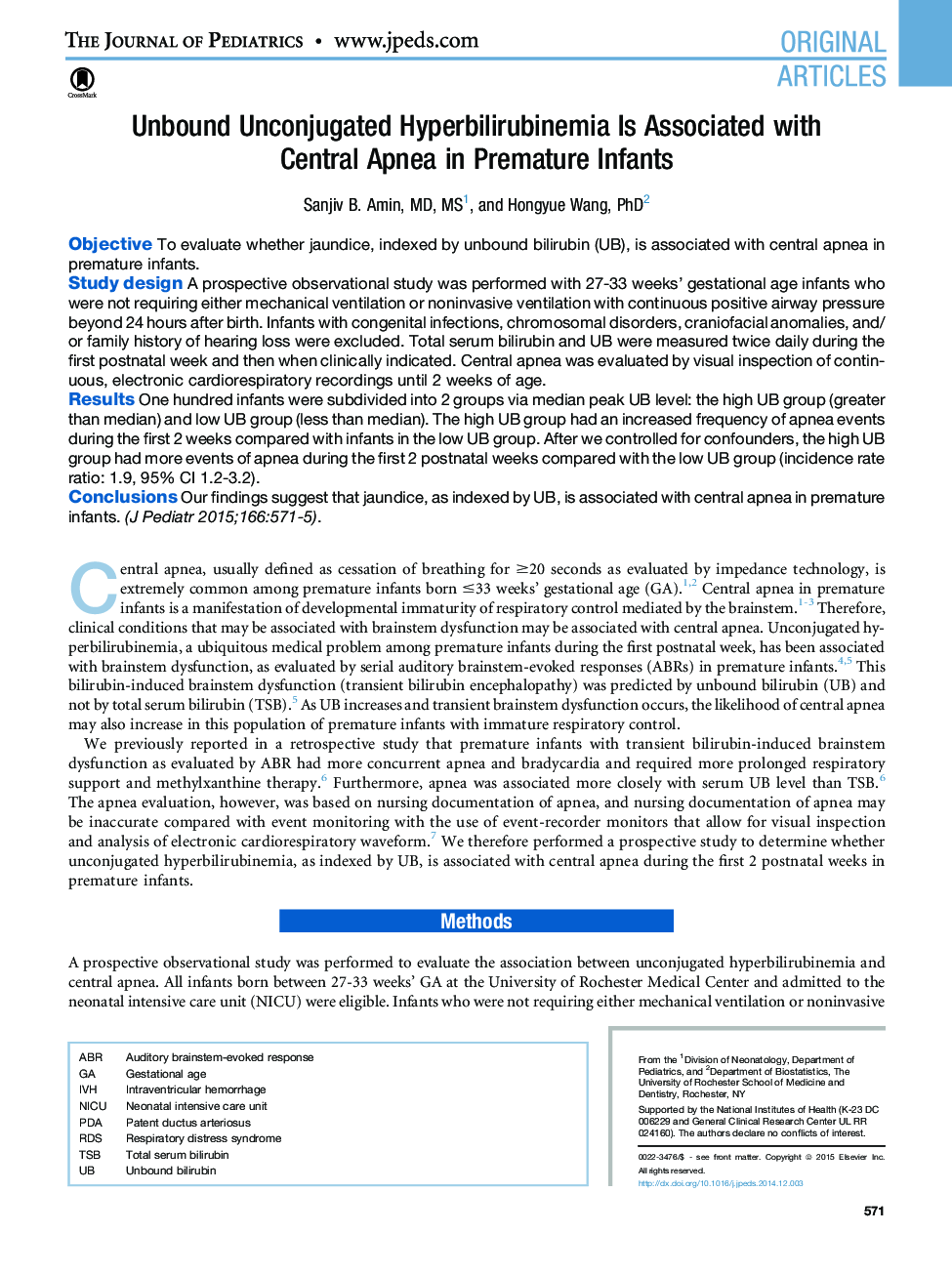| Article ID | Journal | Published Year | Pages | File Type |
|---|---|---|---|---|
| 6221269 | The Journal of Pediatrics | 2015 | 5 Pages |
ObjectiveTo evaluate whether jaundice, indexed by unbound bilirubin (UB), is associated with central apnea in premature infants.Study designA prospective observational study was performed with 27-33Â weeks' gestational age infants who were not requiring either mechanical ventilation or noninvasive ventilation with continuous positive airway pressure beyond 24Â hours after birth. Infants with congenital infections, chromosomal disorders, craniofacial anomalies, and/or family history of hearing loss were excluded. Total serum bilirubin and UB were measured twice daily during the first postnatal week and then when clinically indicated. Central apnea was evaluated by visual inspection of continuous, electronic cardiorespiratory recordings until 2Â weeks of age.ResultsOne hundred infants were subdivided into 2 groups via median peak UB level: the high UB group (greater than median) and low UB group (less than median). The high UB group had an increased frequency of apnea events during the first 2Â weeks compared with infants in the low UB group. After we controlled for confounders, the high UB group had more events of apnea during the first 2 postnatal weeks compared with the low UB group (incidence rate ratio: 1.9, 95% CI 1.2-3.2).ConclusionsOur findings suggest that jaundice, as indexed by UB, is associated with central apnea in premature infants.
